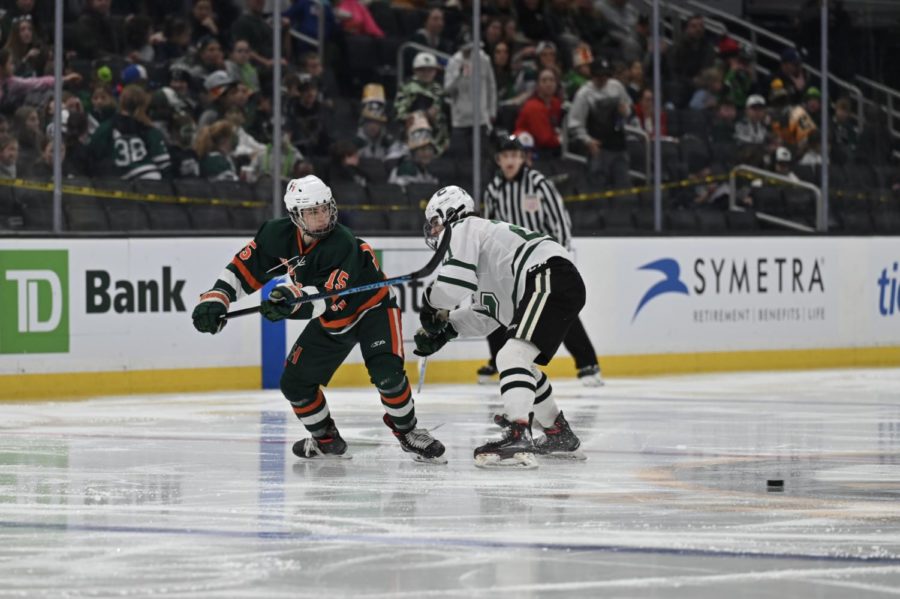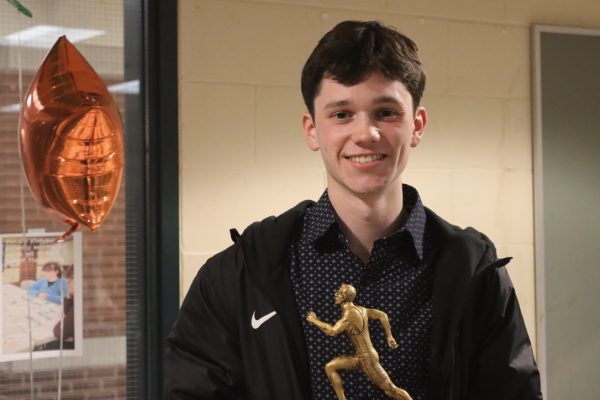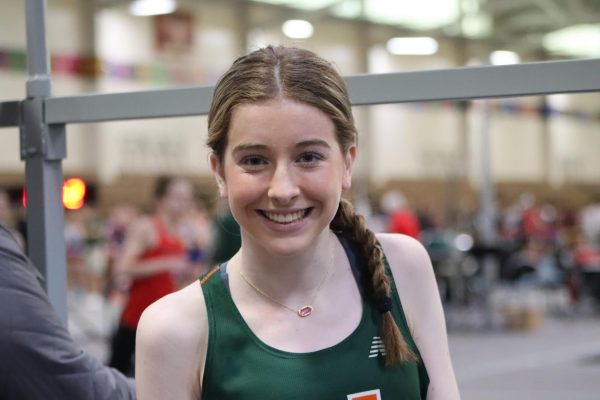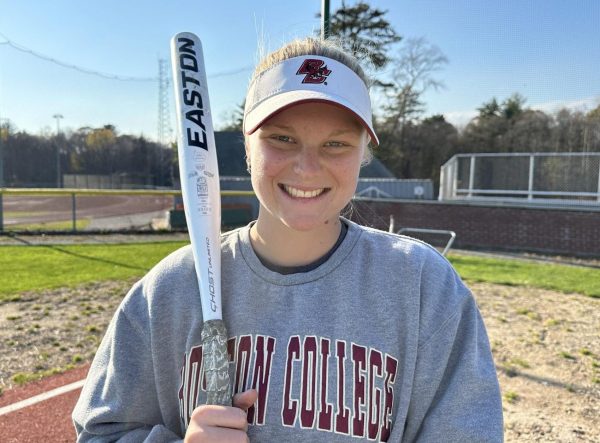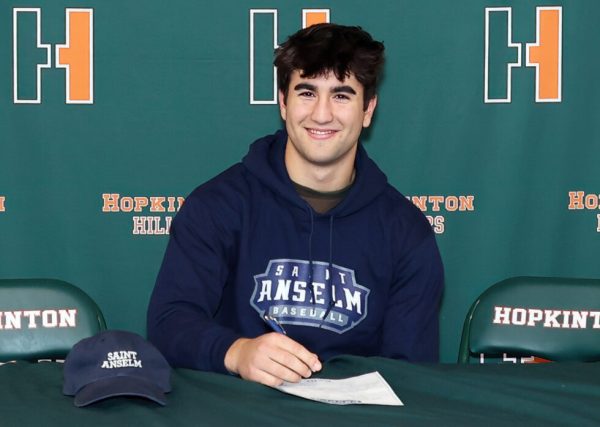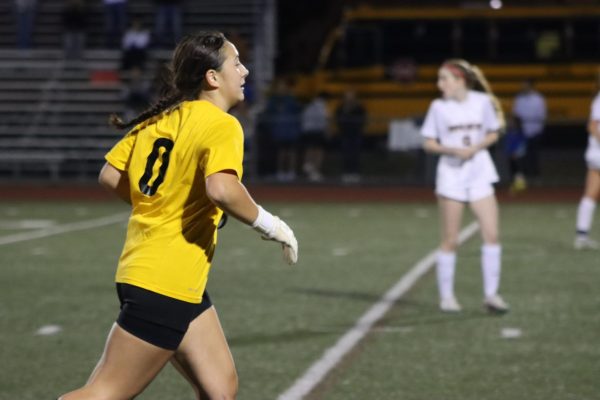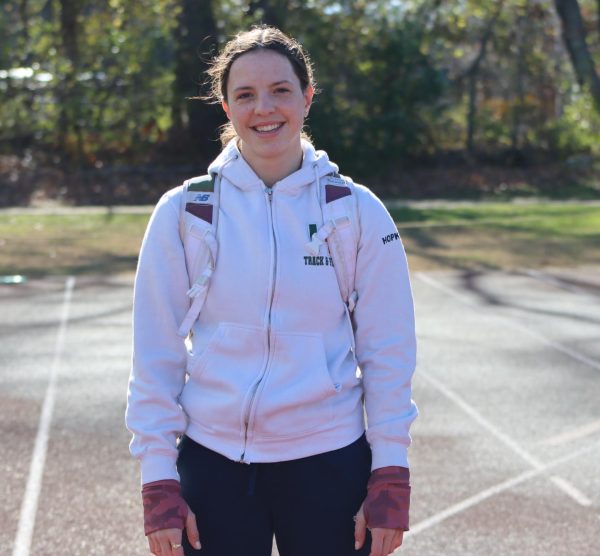TD Garden: Behind the Curtain
On March 12, the Hillers hockey team beat Walpole to secure their spot in the MIAA State Cup, hosted at TD Garden. The final was set for Sunday, March 19.
The semifinal victory provided an opportunity for players and photographers alike. The ability to play the role of major names, like goaltender Linus Ulmark, forward David Pastrnak, and photographers Brian Babs and Jim Davis was thrilling.
As a sports photographer, this was definitely a pinnacle moment in my career. I have photographed Hiller hockey for five years, yet this was my first experience on such a big stage.
My day started at 7:00 AM as my first alarm went off. With the puck drop at 11:00 AM, this might have been ambitious, but I was not going to let anything get in the way on this day.
The night prior I laid out all I needed for the morning. I arranged everything for my drive into the city.
From my hot pink blazer, down to my light pink camera bag, I felt ready. I brought all my necessary baggage to the car and set off. The drive was 42 minutes, plus a stop for a Dunkin’ iced coffee. I arrived at the Garden around 8:30 AM. 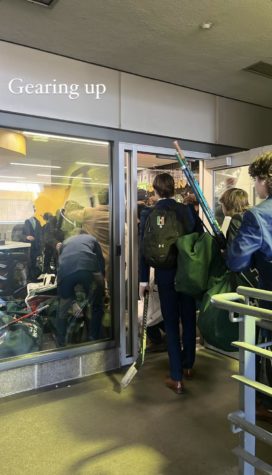
Upon entering, I was greeted by large signs pointing visitors in the direction of general seating. I followed a few of these until reaching one that read “Authorized personal proceeds to the box office,” flanked by two event staff people. I let them know I was covering the game. They guided me to a separate entrance.
I turned the corner to find our very own team unloading their equipment from the bus. This was a pleasant surprise, as it was nice to see some friendly faces in such a change of scenery.
Security staff checked our bags through an airport-type scanner. In front of me was another reporter, Cam Kerry from The Boston Globe. It was clear this was not his first event. We both signed in and received our press credentials. We were the first two media personnel to arrive.
We finished our security check with a final full body scanner and made our way to the employee elevator with the Hiller coaches. Kerry asked what floor I needed.
I responded, “I’m not quite sure.”
Kerry’s guidance filled me in on where to operate. Floor 3 was ice level and had access to the media holes to shoot photographs through the glass. Floors 4-7 were public seating, a prime place for interviewing fans. Floor 8 was home to all things mechanical, and then there was Floor 9.
The number 9 on the elevator simply read “Press.” 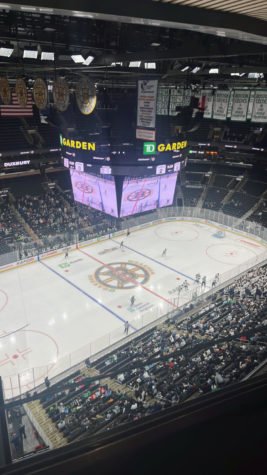
At 8:45 AM, the stadium was nearly empty, but it wouldn’t stay that way for long. I settled in to kill some time and prepare for the game.
My media pass gave me access to various unexplored places in the rink. I took an hour scoping out where I wanted to set up my camera and shoot from.
There were multiple games scheduled for the day. The prior D2 girl’s game wrapped up. It was finally time.
Scattered through the lower deck of the rink were small observation zones equipped with openings in the glass for a camera lens to get unobstructed views. I set my stuff down and watched warmups.
For the majority of the Hopkinton-Canton match-up, I remained on ice level.
Players from the different games flowed in and out. Most of my encounters were very friendly. One rushed press photographer was not so kind, but I did not choose to let that dampen my day.
I stayed ice-level until the warmups for the D1 game began. Xaverian and Pope Francis took the ice around 1:00.
I headed up to the ninth floor to begin my post-game work. The area was buzzing with photographers, reporters, and more. I almost felt out of place.
Returning to a spot I had scoped out, I sat in a swivel chair with a long bar-fashioned desk. The desk was equipped with built-in tablets and outlets.
In front of me, a female reporter sat with her coworkers. She had already pre-written part of her article on her computer about the game while the play was actively unfolding. She added bits and pieces as the game progressed. I knew this was the order of operations used by most sports reporters, but I had never watched it happen in real-time.
Watching her work felt like looking into the future. I could see someone working in a field I hope to be doing for years to come.


